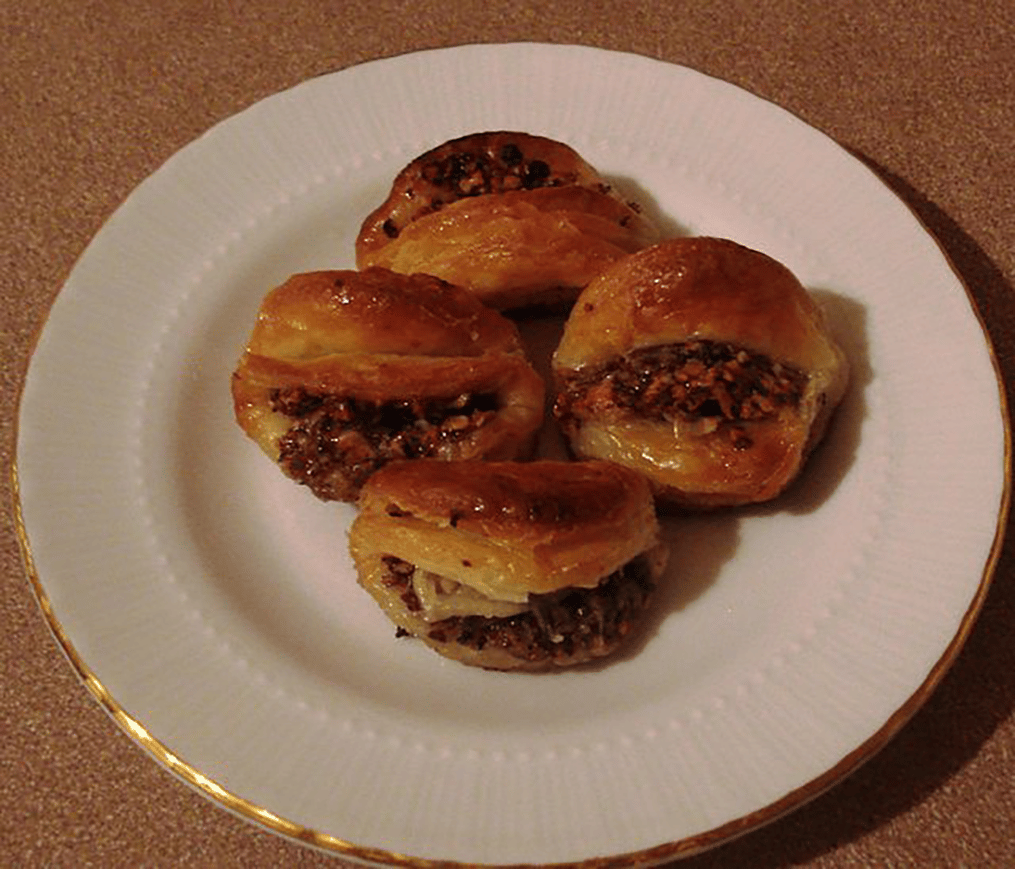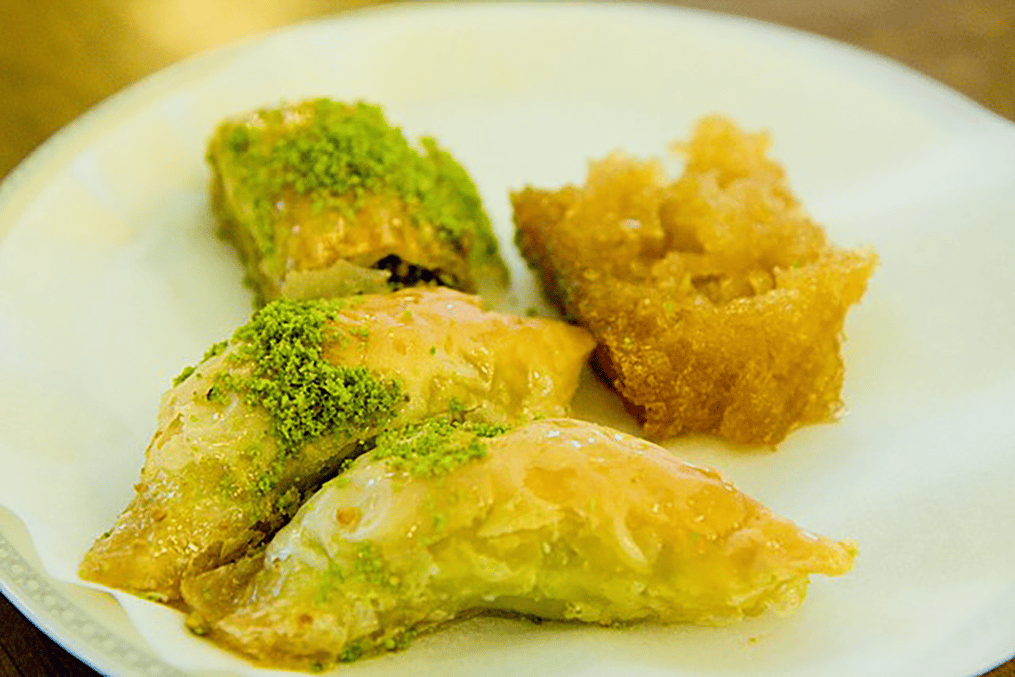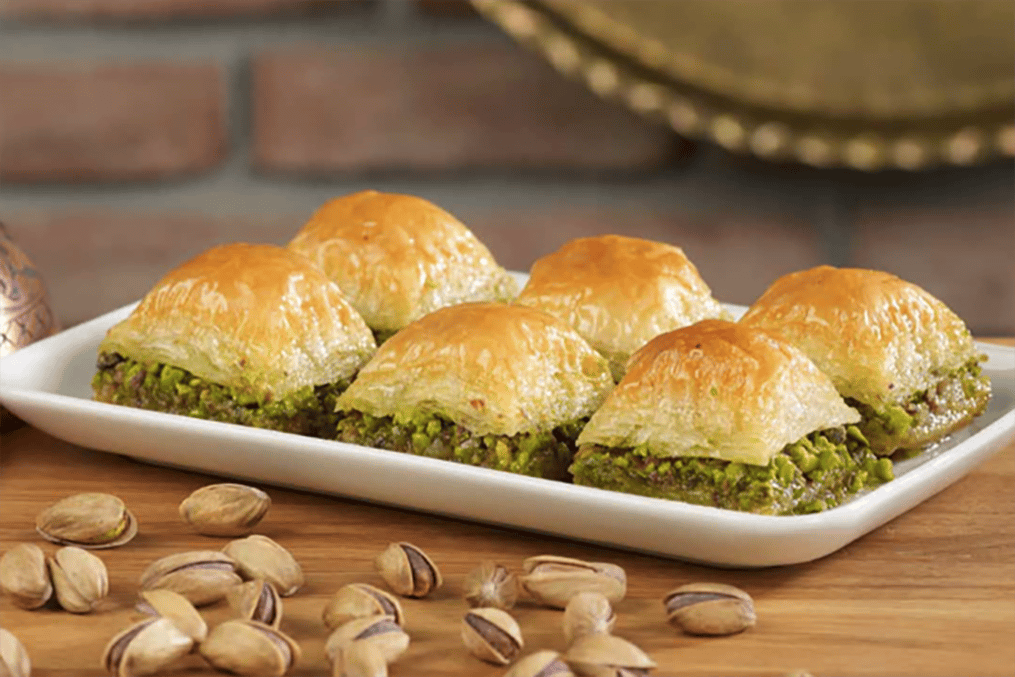- Home
- Articles
- Sweet Phyllo Pastries From the Historic Lanes of Turkey that are Beloved Middle Eastern Desserts
In love with everything Middle East? Or curious about their special sweets? Here's another installment of their much loved pastries made with phyllo dough and doused in a sweet syrup

Sweet Phyllo Pastries From the Historic Lanes of Turkey that are Beloved Middle Eastern DessertsThis installment of Middle Eastern desserts made with the trademark paper thin phyllo dough, meaning leaf in Greek, covers Börek, and some more cluster of pastries, pies and rolls made from phyllo pastry, that are said to have been invented by the nomadic Turks around the late 5th century, we mean Börek. Here’s another piece of history from the lanes of Turkey and their sweet phyllo dough pastries that are a must try.
1. Börek
This pastry comes in both sweet and savoury versions and is a baked dish made with a filling wrapped in yufka – very thin sheets of dough created from flour, water, and salt. Yufka is thicker than phyllo but slimmer than a tortilla and the handmade yufka is usually brushed with butter prior to baking. While many countries have their own versions, börek likely originated during the Ottoman Empire in Anatolia, now part of modern Turkey. Some suggest börek descended from the Byzantine Anatolian dish known as en tyritas plakountas with layered dough and cheese filling from 160 BC. Wherever it came from, it is quintessentially Turkish anf Turkey is famous for its layered börek pastries, the name might have been derived from the Turkish word bur meaning "to twist." Sweet börek varieties mostly include laz böreği from Rize with a custard muhallebi filling and powdered sugar topping, then there’s also the Kürt böreği or sade that has just powdered sugar in it.
2. Dilber dudağı

This dessert dates back to the Ottoman Empire era that it says that a local chef was in love with a lady called Dilber but some some unfortunate reason they couldn't be together. The lovelorn chef created this sweet pastry resembling his lady love's plump lips. It does have a striking resemblance to a parted mouth doesn't it? The layered phyllo pastry has a stuffing of nuts which are soaked in honey. This dessert is cooked after the dough is shaped into half moons enveloping the filling, then the prepared sugar syrup with lemon juice is poured over the pastry for the finishing.
3. Şöbiyet

If sugar syrups are getting you all nauseated, this middle eastern dessert will relieve you, for it uses cream, and yes, it's one kind of baklava. Şöbiyet in Arabic translates to “being full” possibly because it's a really filling dessert. It's made with the typical phyllo pastry (in this case a cream lined one, which is why it's called wet baklava), walnuts with the syrup, but also a coating of cream, made with Kaymak, Turkey's famed clotted cream, made with semolina and milk. This pastry dessert is served with ice cream and you'll find it in many bakeries across Turkey.
4. Vişneli baklava
How about a sour cherry core around which the phyllo dough is wrapped? Because this is what Vişneli baklava is and it's quite popular in Turkey. It's the perfect balance of sweet and sour and the whole thing is doused in wet syrup, infused with lemon juice. Poppy seed is another common flavour for the Vişneli baklava, that is mixed into the filling itself. This one's also often enjoyed with the Turkish clotted cream called Kaymak.
5. Gaziantep baklavası

Gaziantep, formerly known as Antep, is considered Türkiye's food capital and it is famous for having the world's best pistachios and producing the delicious Antep baklavası. Baklava originated as an Ottoman dish and is considered one of the greatest creations from the pastry chefs at Topkapı Palace, the former royal residence. With over 500 baklava bakeries in Gaziantep, this baklava variety with the best local pistachios used, should not be missed, especially during the pistachio harvest season when the nuts are the right size for the pastry. This baklava is made by crushing Gaziantep pistachios which are layered between the phyllo dough sheets, brushed with butter and then smothered with semolina cream. It is baked and soaked in a hot sugar-lemon syrup and garnished with crushed pistachios and eaten with either Kaymak or Turkish ice cream, Dondurma. According to Turkish baker masters, proper baklava is tender yet crunchy when pulled apart with a fork, the cracking sound indicating freshness.
6. Kestaneli baklava
Chestnuts are a little unusual in anything made with phyllo pastry sheets but not unheard of. In Turkey, chestnuts are symbolic and have their roots in the ancient city of Sardis, the capital of the Lydian Empire, around 1500 BC. In modern Turkey, chestnuts are associated with the cities of Bursa and Marmara, although they are loved throughout the country. Today chestnuts are sold in candied form by street vendors in Turkey during winters and baklavas take these candied chestnuts as their filling, the phyllo dough wrapping around them to form these concentric ring-like pastries. Kestaneli baklava is usually topped with ground pistachios.
Like This Article?
More Like This




Popular Articles





Trending Web Stories
Curated Recipes


















